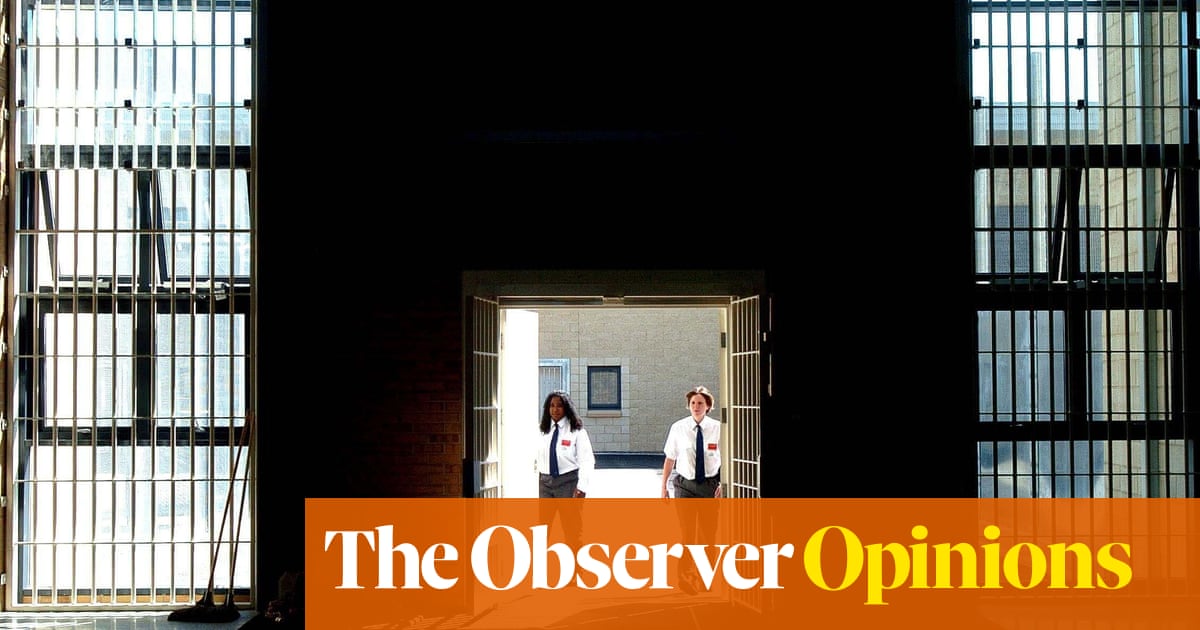For a long time, I thought one of my most radical beliefs, really quite edgy, was that women’s prisons should be abolished. As the years passed, it’s felt less and less radical, and today it’s increasingly clear this is not just necessary, but urgent.
Prisons are in a profound state of crisis – the prison population of England and Wales has doubled over the last 30 years, despite crime rates falling substantially, and the Prison Governors’ Association warned two weeks ago that prisons were just days away from running out of cells. Setting out plans to release 5,500 inmates early, justice secretary Shabana Mahmood said Rishi Sunak was responsible for “the most disgraceful dereliction of duty” by failing to address the problem. According to the Mirror, one proposal put forward to the government to ease the pressure was to release enough female prisoners to free up an entire prison. And campaigners are saying, in a familiar tone of exhausted fury, why stop there?
It’s useful maybe to ask here, what’s prison for? There’s the obvious answer: if you break the law, you must be punished. Then there’s deterrence: if you worry you might be punished, you’re less likely to break the law. Plus, if you’re locked up, in theory you can’t commit any more crimes. Then there’s rehabilitation: while you’re in prison, modern thinking is that you should be receiving help, emerging finally as a better person. But even the most cursory scan of the statistics shows that all prisons fail, often in obscene and shocking ways.
Women’s prisons have long been suffering their own specific crisis-within-a-crisis. Rather than the problem being (as some commentators insist) the tiny number of trans prisoners, there is the self-harm (at its highest rate ever recorded last year, an increase of 63% – 11 times higher than in the male estate), mental health issues (suffered by 76% of women in prison) and the impact on prisoners’ children. Pregnant women are seven times more likely to suffer a stillbirth than those outside prison and, as I write, Inside Time reports that another baby has died in an English prison, the third in five years.
Prison is not a safe place for women. Some 48% have committed an offence in order to support someone else’s drug habit, which makes sense when you realise 70% of female offenders have experienced domestic abuse and over half have experienced abuse as children. They are largely incarcerated for petty crimes – women are far more likely to be criminalised than men if, for instance, their children refuse to go to school. Most are serving less than six months, often for shoplifting (women being disproportionately affected by the cost-of-living crisis), but however much time they get, their lives and those of their children are inevitably derailed for ever.
It’s painful even to write this, to stack these sharp facts on top of each other, because it requires facing up to the women behind the statistics, each life and the compromises that shaped them. And that’s before you look at the realities of the prisons themselves. An independent inspection of HMP Eastwood Park in 2022 found three women had died there that year and inmates were living in “appalling” conditions. A photograph of one cell appeared alongside reports. It showed a room that you might find in a dystopian Ikea after a terrible flood. Another cell was “blood-spattered, and some had extensive scratches on the walls, which reflected the degree of trauma [of] previous residents must have experienced”. The inspection concluded that “no prisoner should be held in such conditions, let alone women who were acutely unwell and in great distress”.
Jasmine York, jailed there for 10 weeks for her part in the kill the bill protest, said, “People self-harm in prison in ways that I have never even imagined.” She told the BBC: “People are leaving and either re-committing or they’re leaving in a body bag.” New figures, released last month, suggest HMP Eastwood Park is not unique. The number of assaults and self-harm incidents in women’s prisons in England and Wales has hit record highs. Which, I guess, should surprise nobody – this is what happens, isn’t it, when traumatised people with mental illnesses are locked up in squalor, without real support or grounded hope, and blood on the walls.
It is possible (and would be deeply cost effective) to create new solutions for the tiny number of women who are a genuine threat to their communities and release the vast majority of women who are people who have been repeatedly failed by a system obsessed with punishment, rather than prevention. This spring the charity Women in Prison published a report about the value of women’s centres. There are around 40 of these “one-stop-shops” across England and Wales, offering access to specialist advocacy, support on housing, debt, addiction, mental health, employment and education, domestic abuse, and parenting, all services that can prevent women from being swept into the criminal justice system, then struggling to surface. The report is oddly beautiful to read, both because it starts with a poem, and because in its humanity it exposes how dehumanising the existing alternative is – and offers another way. It’s a reminder that the institution of the prison remains a blunt weapon, one that damages not just those inside its walls, but the rest of us, studiously looking away, too.
Email Eva at e.wiseman@observer.co.uk or follow her on X @EvaWiseman
